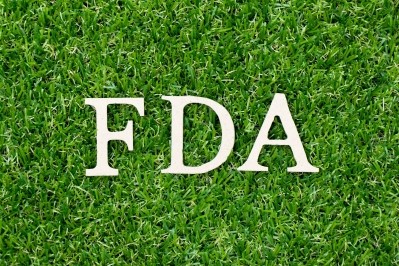FDA’s Tave: Mandatory product listing would be ‘a dramatic step forward in narrowing the regulatory gap’

Speaking during the Council for Responsible Nutrition’s Now, New, Next digital conference yesterday (Oct 14), Tave, who is director of the FDA’s Office of Dietary Supplement Programs, said the task before all stakeholders is to update the regulatory framework to ensure the original vision of DSHEA remains viable in today’s world.
“When we talk about modernization we’re really talking about closing the regulatory gap,” he said. “A well-constructed listing requirement would represent a dramatic step forward in narrowing the regulatory gap.”
The regulatory gap
Tave introduced the concept of the ‘regulatory gap’ last month during the 2020 Dietary Supplements Regulatory Summit (DSRS).
“The “regulatory gap” is my attempt to explain why there continues to be a significant amount of non-compliance in the dietary supplement marketplace even though we have a clear segment of responsible industry participants, who we believe generally are committed to manufacturing and distributing compliant products,” he said.
“I want to be clear that this isn’t a complaint about resources. Yes, FDA can always do more with more resources, but my office was very fortunate to receive a boost in finding during the last appropriations cycle.
“I also want to be clear that this isn’t a matter of FDA not wanting to enforce the law. I can’t understand why some people insist on repeating that fallacy. We have an active enforcement program. I’m standing before you saying we want to enforce the law more.
“We’ve also asked for a mandatory listing requirement that would help us enforce the law more effectively. You should be highly skeptical any time someone tries to tell you that FDA refuses to enforce the law.”
Tave went on to state that the regulatory gap is “not just a function of inadequate resources, and it isn’t the result of some bizarre self-defeating secret conspiracy not to enforce the law.
“Rather, the regulatory gap results from structural, legal, and practical forces that reflect a divergence between how the law was written in 1994 and how the world has changed since then, and now combine to impede the effective, full regulation of the dietary supplement marketplace.”
Jurisdictional and legal challenges
Tave expanded on the challenges his office faces in enforcement.
“The first step in exercising our authority is establishing jurisdiction. So if a product turns out not to be a dietary supplement, that means that we cannot bring dietary supplement charges – such as dietary supplement CGMP violations – against it,” he said.
In addition to jurisdictional challenges, there are legal challenges to enforcement, said Tave, and this comes up a lot regarding enforcement of the NDI notification requirement.
“We have heard it loud and clear the call for increased enforcement in this space. But that is much more easily said than done,” he said.
Tave noted that one issue is that the NDI notification requirement is not absolute. Section 4.13 of the Act allows an alternate pathway through ingredients that have been present in the food supply, and many dietary supplements firms have chosen to first introduce ingredients into the food supply using the self-GRAS process, which does not require notification to FDA.
“As a result, we cannot just look at a product and assume that it is out of compliance simply because there is not NDI notification. And that is a problem because section 402(f) – which is the applicable adulteration provision – requires us to bear the burden of proof on each element of a violation,” said Tave
“Some people think that import alerts can circumvent this problem. But while import alerts may lower the burden, and allow us to detain products based on an appearance of a violation, we still have to show evidence of a violation. And an “appearance” of a violation is not the same thing as a “possibility” of a violation. Import alerts are a valuable tool in the agency’s belt, but like everything else we do they have to be adequately supported.”
ODI
When asked by CRN’s Steve Mister about a possible list of old dietary ingredients (ODIs) and the status of a final NDI guidance, Tave noted that the FDA does have a current list of new dietary ingredient notifications on its website.
He also mentioned the public meeting three years ago on pre-DSHEA ingredients. “It’s something that would be nice to have in an ideal world. It would take a lot of resources to compile.”
Regarding a final NDI guidance. “I was new to the job when the revised draft guidance came out in August 2016 and I’m fairly certain my stock response then was that it took us five years to put out the revised draft and I don’t want it to take us five years to put out the final, but we’re now in October of 2020,” said Tave. “We’ve tried to make forward progress on areas that we think can be addressed. Master files was another issue that we’ve talked about.
“We’re trying to get that guidance, or at least parts of that guidance, as close to final as we can.”









